Accounting for Business Combinations: Detailed Report - Spring 2017
VerifiedAdded on 2020/05/11
|6
|1451
|45
Report
AI Summary
This report provides a comprehensive analysis of accounting for business combinations, focusing on segment reporting as per AASB 8. It explores the purpose of segment reporting, the management approach, and the differences between segment reporting and consolidated accounting. The report examines the case of Global Value Fund Limited (GVF), an investment company, and how it applies segment reporting in its annual report for the year ended 30 June 2016. It discusses GVF's investment activities, revenue sources, and disclosures of segment revenue, expenses, assets, and liabilities. The report also addresses potential differences between reportable segments and consolidated figures, emphasizing the importance of reconciliation and audit trails. The analysis references several academic sources to support the findings and conclusions.
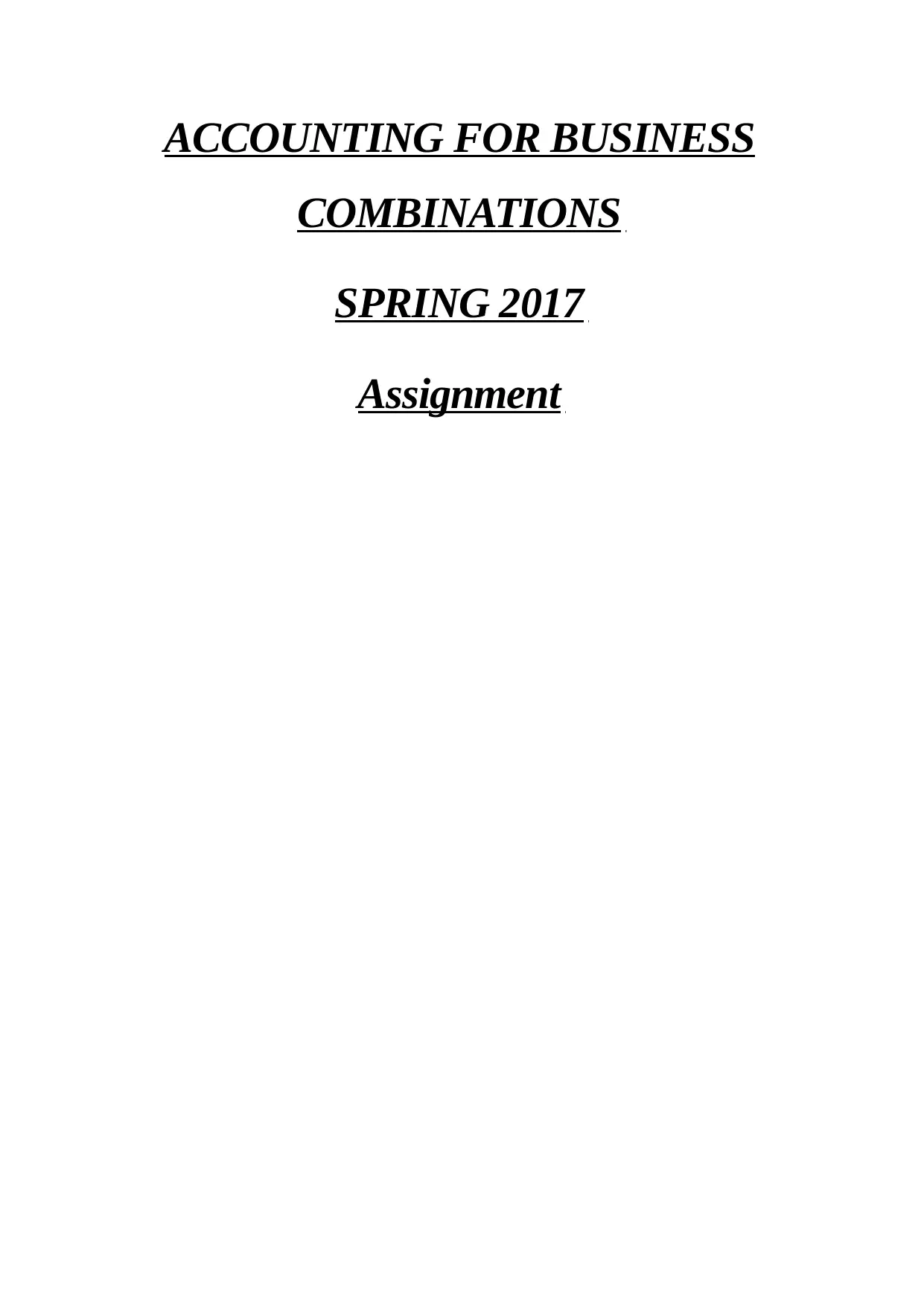
ACCOUNTING FOR BUSINESS
COMBINATIONS
SPRING 2017
Assignment
COMBINATIONS
SPRING 2017
Assignment
Paraphrase This Document
Need a fresh take? Get an instant paraphrase of this document with our AI Paraphraser
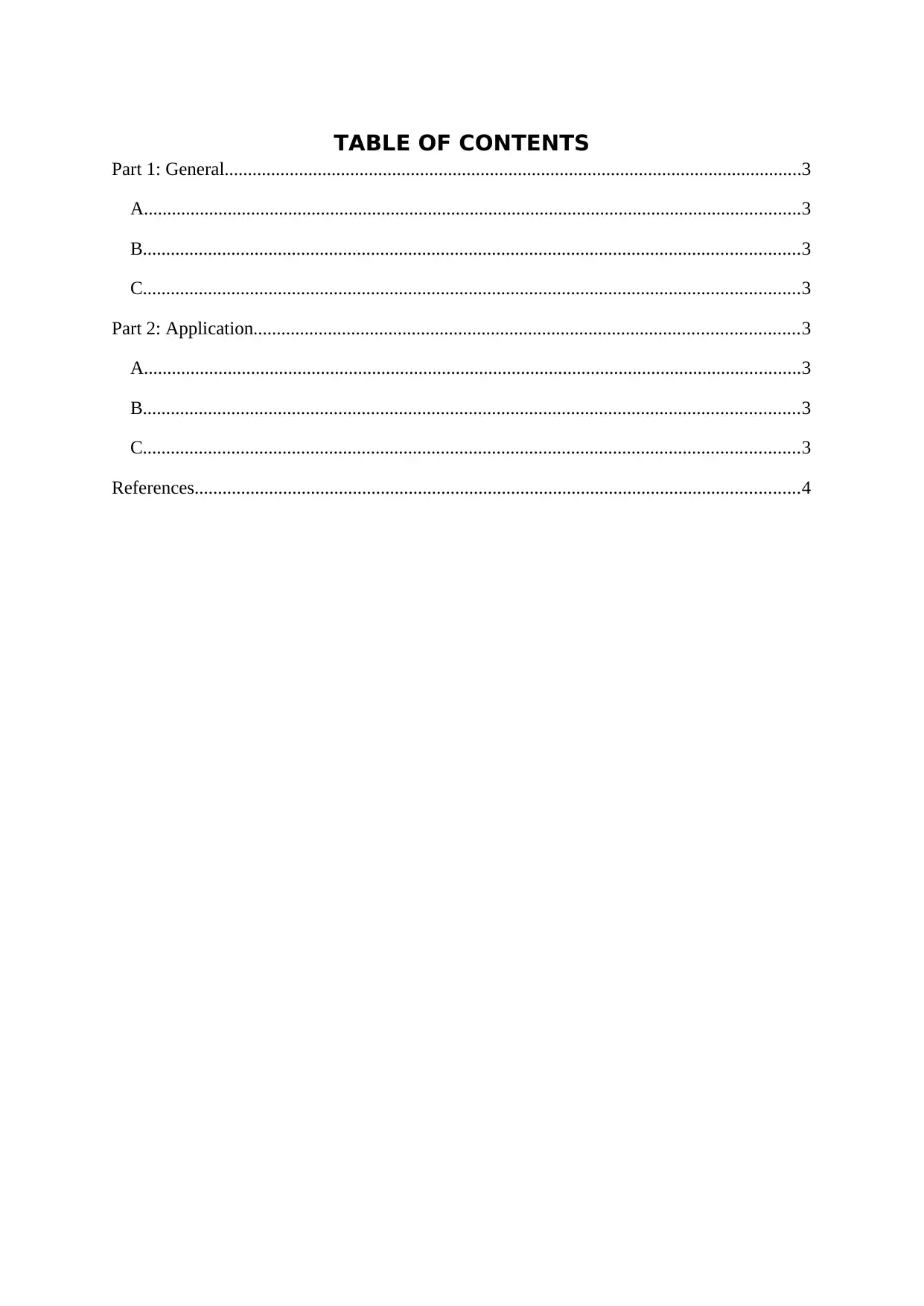
TABLE OF CONTENTS
Part 1: General............................................................................................................................3
A.............................................................................................................................................3
B.............................................................................................................................................3
C.............................................................................................................................................3
Part 2: Application.....................................................................................................................3
A.............................................................................................................................................3
B.............................................................................................................................................3
C.............................................................................................................................................3
References..................................................................................................................................4
Part 1: General............................................................................................................................3
A.............................................................................................................................................3
B.............................................................................................................................................3
C.............................................................................................................................................3
Part 2: Application.....................................................................................................................3
A.............................................................................................................................................3
B.............................................................................................................................................3
C.............................................................................................................................................3
References..................................................................................................................................4
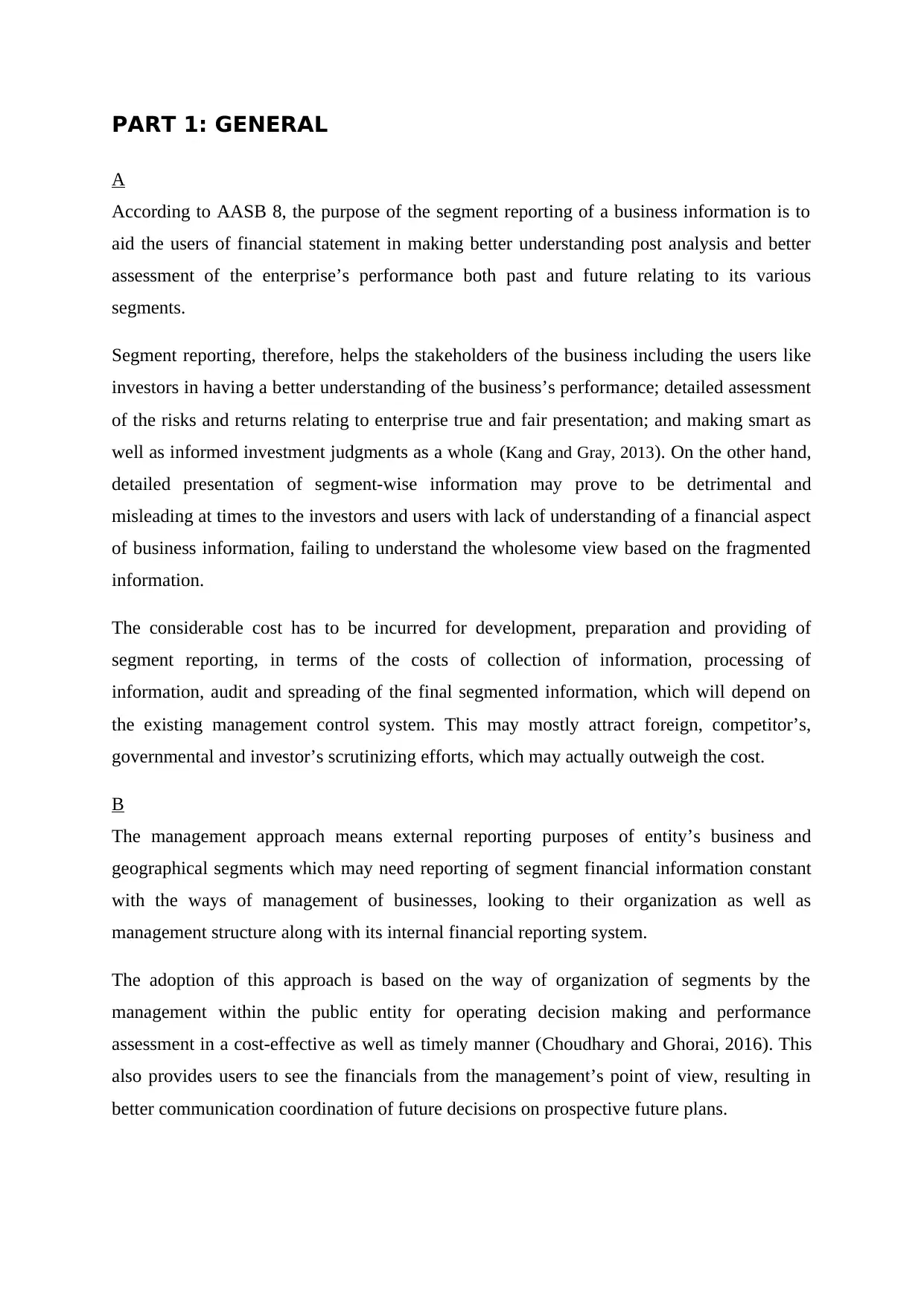
PART 1: GENERAL
A
According to AASB 8, the purpose of the segment reporting of a business information is to
aid the users of financial statement in making better understanding post analysis and better
assessment of the enterprise’s performance both past and future relating to its various
segments.
Segment reporting, therefore, helps the stakeholders of the business including the users like
investors in having a better understanding of the business’s performance; detailed assessment
of the risks and returns relating to enterprise true and fair presentation; and making smart as
well as informed investment judgments as a whole (Kang and Gray, 2013). On the other hand,
detailed presentation of segment-wise information may prove to be detrimental and
misleading at times to the investors and users with lack of understanding of a financial aspect
of business information, failing to understand the wholesome view based on the fragmented
information.
The considerable cost has to be incurred for development, preparation and providing of
segment reporting, in terms of the costs of collection of information, processing of
information, audit and spreading of the final segmented information, which will depend on
the existing management control system. This may mostly attract foreign, competitor’s,
governmental and investor’s scrutinizing efforts, which may actually outweigh the cost.
B
The management approach means external reporting purposes of entity’s business and
geographical segments which may need reporting of segment financial information constant
with the ways of management of businesses, looking to their organization as well as
management structure along with its internal financial reporting system.
The adoption of this approach is based on the way of organization of segments by the
management within the public entity for operating decision making and performance
assessment in a cost-effective as well as timely manner (Choudhary and Ghorai, 2016). This
also provides users to see the financials from the management’s point of view, resulting in
better communication coordination of future decisions on prospective future plans.
A
According to AASB 8, the purpose of the segment reporting of a business information is to
aid the users of financial statement in making better understanding post analysis and better
assessment of the enterprise’s performance both past and future relating to its various
segments.
Segment reporting, therefore, helps the stakeholders of the business including the users like
investors in having a better understanding of the business’s performance; detailed assessment
of the risks and returns relating to enterprise true and fair presentation; and making smart as
well as informed investment judgments as a whole (Kang and Gray, 2013). On the other hand,
detailed presentation of segment-wise information may prove to be detrimental and
misleading at times to the investors and users with lack of understanding of a financial aspect
of business information, failing to understand the wholesome view based on the fragmented
information.
The considerable cost has to be incurred for development, preparation and providing of
segment reporting, in terms of the costs of collection of information, processing of
information, audit and spreading of the final segmented information, which will depend on
the existing management control system. This may mostly attract foreign, competitor’s,
governmental and investor’s scrutinizing efforts, which may actually outweigh the cost.
B
The management approach means external reporting purposes of entity’s business and
geographical segments which may need reporting of segment financial information constant
with the ways of management of businesses, looking to their organization as well as
management structure along with its internal financial reporting system.
The adoption of this approach is based on the way of organization of segments by the
management within the public entity for operating decision making and performance
assessment in a cost-effective as well as timely manner (Choudhary and Ghorai, 2016). This
also provides users to see the financials from the management’s point of view, resulting in
better communication coordination of future decisions on prospective future plans.
⊘ This is a preview!⊘
Do you want full access?
Subscribe today to unlock all pages.

Trusted by 1+ million students worldwide
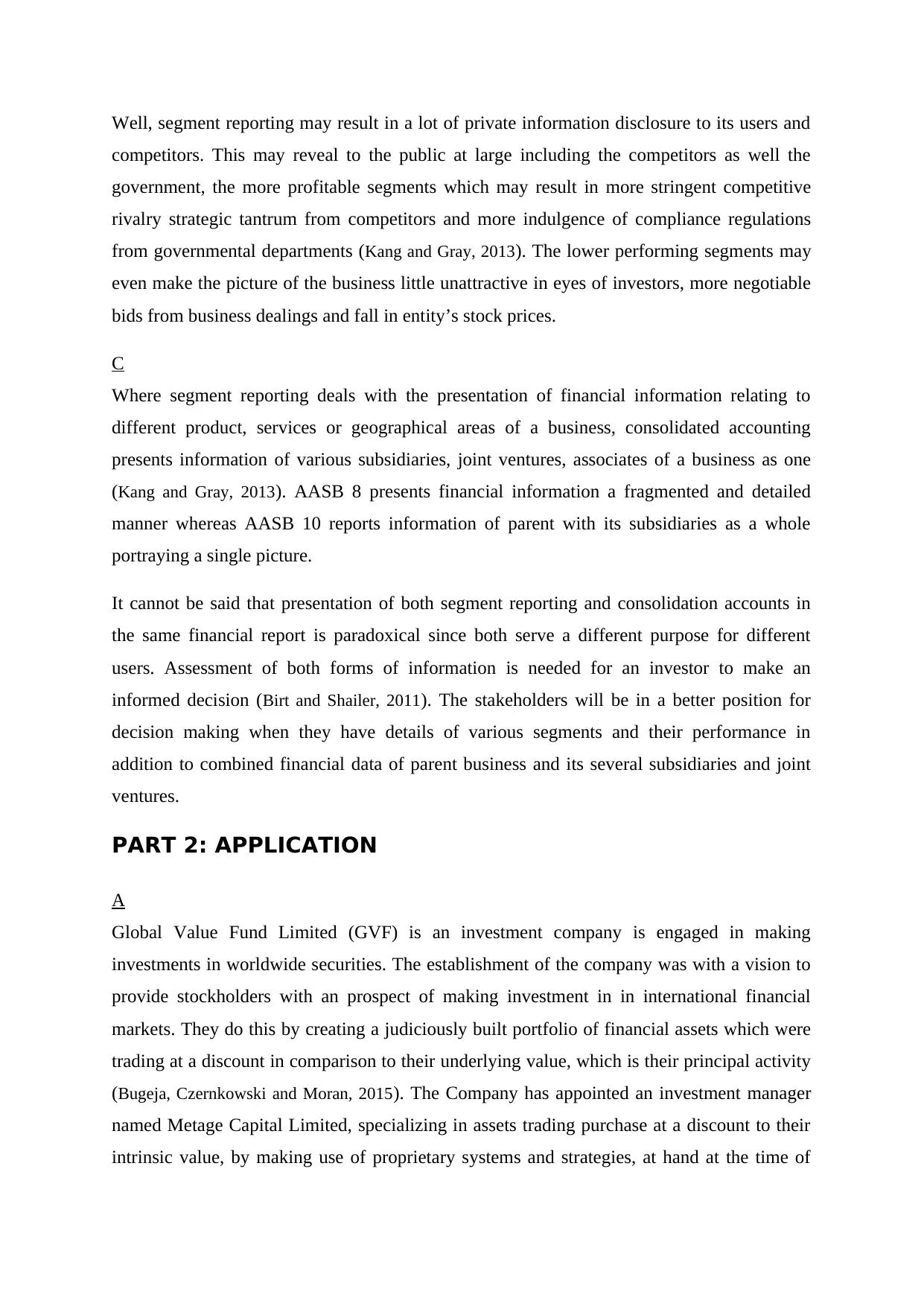
Well, segment reporting may result in a lot of private information disclosure to its users and
competitors. This may reveal to the public at large including the competitors as well the
government, the more profitable segments which may result in more stringent competitive
rivalry strategic tantrum from competitors and more indulgence of compliance regulations
from governmental departments (Kang and Gray, 2013). The lower performing segments may
even make the picture of the business little unattractive in eyes of investors, more negotiable
bids from business dealings and fall in entity’s stock prices.
C
Where segment reporting deals with the presentation of financial information relating to
different product, services or geographical areas of a business, consolidated accounting
presents information of various subsidiaries, joint ventures, associates of a business as one
(Kang and Gray, 2013). AASB 8 presents financial information a fragmented and detailed
manner whereas AASB 10 reports information of parent with its subsidiaries as a whole
portraying a single picture.
It cannot be said that presentation of both segment reporting and consolidation accounts in
the same financial report is paradoxical since both serve a different purpose for different
users. Assessment of both forms of information is needed for an investor to make an
informed decision (Birt and Shailer, 2011). The stakeholders will be in a better position for
decision making when they have details of various segments and their performance in
addition to combined financial data of parent business and its several subsidiaries and joint
ventures.
PART 2: APPLICATION
A
Global Value Fund Limited (GVF) is an investment company is engaged in making
investments in worldwide securities. The establishment of the company was with a vision to
provide stockholders with an prospect of making investment in in international financial
markets. They do this by creating a judiciously built portfolio of financial assets which were
trading at a discount in comparison to their underlying value, which is their principal activity
(Bugeja, Czernkowski and Moran, 2015). The Company has appointed an investment manager
named Metage Capital Limited, specializing in assets trading purchase at a discount to their
intrinsic value, by making use of proprietary systems and strategies, at hand at the time of
competitors. This may reveal to the public at large including the competitors as well the
government, the more profitable segments which may result in more stringent competitive
rivalry strategic tantrum from competitors and more indulgence of compliance regulations
from governmental departments (Kang and Gray, 2013). The lower performing segments may
even make the picture of the business little unattractive in eyes of investors, more negotiable
bids from business dealings and fall in entity’s stock prices.
C
Where segment reporting deals with the presentation of financial information relating to
different product, services or geographical areas of a business, consolidated accounting
presents information of various subsidiaries, joint ventures, associates of a business as one
(Kang and Gray, 2013). AASB 8 presents financial information a fragmented and detailed
manner whereas AASB 10 reports information of parent with its subsidiaries as a whole
portraying a single picture.
It cannot be said that presentation of both segment reporting and consolidation accounts in
the same financial report is paradoxical since both serve a different purpose for different
users. Assessment of both forms of information is needed for an investor to make an
informed decision (Birt and Shailer, 2011). The stakeholders will be in a better position for
decision making when they have details of various segments and their performance in
addition to combined financial data of parent business and its several subsidiaries and joint
ventures.
PART 2: APPLICATION
A
Global Value Fund Limited (GVF) is an investment company is engaged in making
investments in worldwide securities. The establishment of the company was with a vision to
provide stockholders with an prospect of making investment in in international financial
markets. They do this by creating a judiciously built portfolio of financial assets which were
trading at a discount in comparison to their underlying value, which is their principal activity
(Bugeja, Czernkowski and Moran, 2015). The Company has appointed an investment manager
named Metage Capital Limited, specializing in assets trading purchase at a discount to their
intrinsic value, by making use of proprietary systems and strategies, at hand at the time of
Paraphrase This Document
Need a fresh take? Get an instant paraphrase of this document with our AI Paraphraser
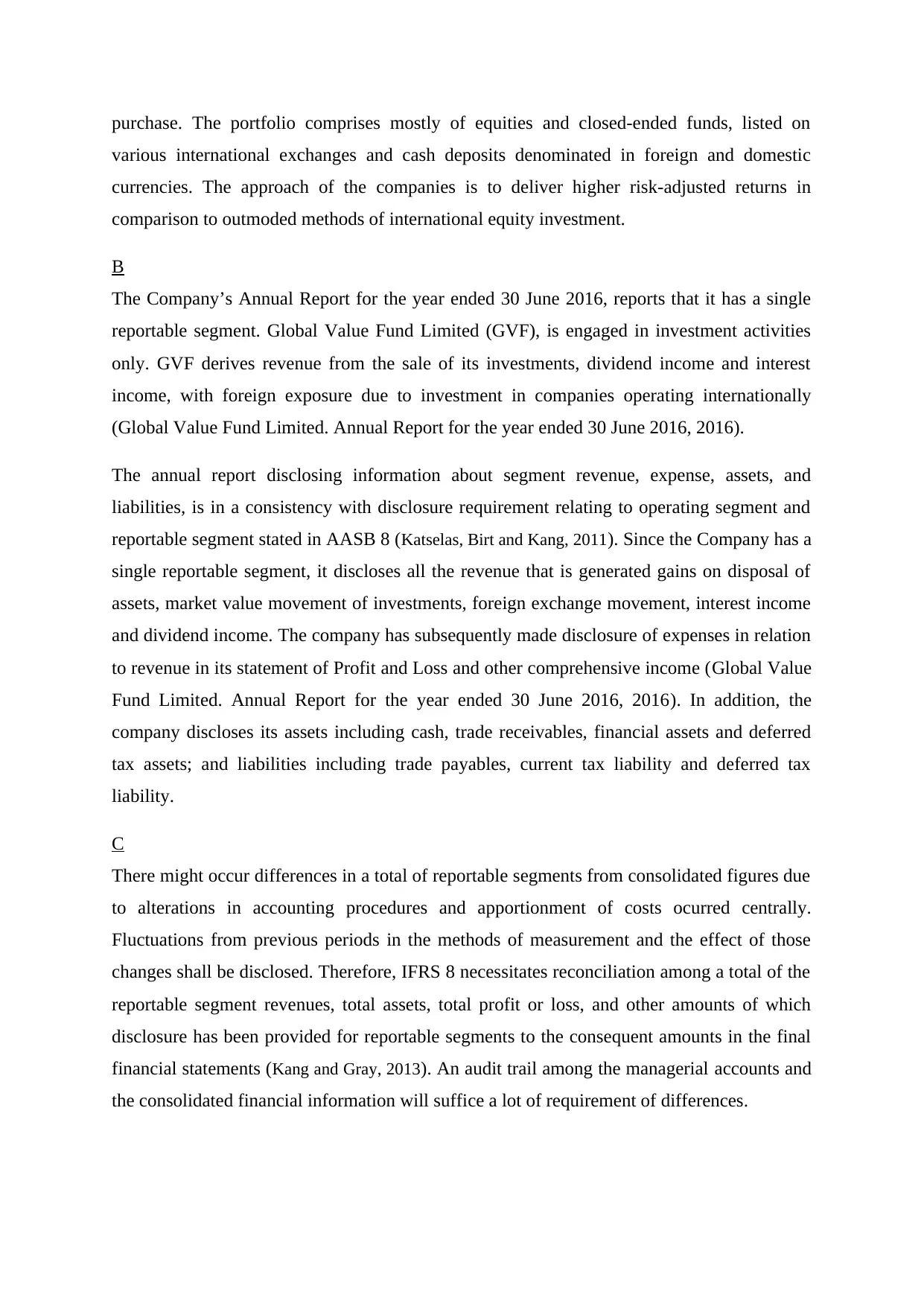
purchase. The portfolio comprises mostly of equities and closed-ended funds, listed on
various international exchanges and cash deposits denominated in foreign and domestic
currencies. The approach of the companies is to deliver higher risk-adjusted returns in
comparison to outmoded methods of international equity investment.
B
The Company’s Annual Report for the year ended 30 June 2016, reports that it has a single
reportable segment. Global Value Fund Limited (GVF), is engaged in investment activities
only. GVF derives revenue from the sale of its investments, dividend income and interest
income, with foreign exposure due to investment in companies operating internationally
(Global Value Fund Limited. Annual Report for the year ended 30 June 2016, 2016).
The annual report disclosing information about segment revenue, expense, assets, and
liabilities, is in a consistency with disclosure requirement relating to operating segment and
reportable segment stated in AASB 8 (Katselas, Birt and Kang, 2011). Since the Company has a
single reportable segment, it discloses all the revenue that is generated gains on disposal of
assets, market value movement of investments, foreign exchange movement, interest income
and dividend income. The company has subsequently made disclosure of expenses in relation
to revenue in its statement of Profit and Loss and other comprehensive income (Global Value
Fund Limited. Annual Report for the year ended 30 June 2016, 2016). In addition, the
company discloses its assets including cash, trade receivables, financial assets and deferred
tax assets; and liabilities including trade payables, current tax liability and deferred tax
liability.
C
There might occur differences in a total of reportable segments from consolidated figures due
to alterations in accounting procedures and apportionment of costs ocurred centrally.
Fluctuations from previous periods in the methods of measurement and the effect of those
changes shall be disclosed. Therefore, IFRS 8 necessitates reconciliation among a total of the
reportable segment revenues, total assets, total profit or loss, and other amounts of which
disclosure has been provided for reportable segments to the consequent amounts in the final
financial statements (Kang and Gray, 2013). An audit trail among the managerial accounts and
the consolidated financial information will suffice a lot of requirement of differences.
various international exchanges and cash deposits denominated in foreign and domestic
currencies. The approach of the companies is to deliver higher risk-adjusted returns in
comparison to outmoded methods of international equity investment.
B
The Company’s Annual Report for the year ended 30 June 2016, reports that it has a single
reportable segment. Global Value Fund Limited (GVF), is engaged in investment activities
only. GVF derives revenue from the sale of its investments, dividend income and interest
income, with foreign exposure due to investment in companies operating internationally
(Global Value Fund Limited. Annual Report for the year ended 30 June 2016, 2016).
The annual report disclosing information about segment revenue, expense, assets, and
liabilities, is in a consistency with disclosure requirement relating to operating segment and
reportable segment stated in AASB 8 (Katselas, Birt and Kang, 2011). Since the Company has a
single reportable segment, it discloses all the revenue that is generated gains on disposal of
assets, market value movement of investments, foreign exchange movement, interest income
and dividend income. The company has subsequently made disclosure of expenses in relation
to revenue in its statement of Profit and Loss and other comprehensive income (Global Value
Fund Limited. Annual Report for the year ended 30 June 2016, 2016). In addition, the
company discloses its assets including cash, trade receivables, financial assets and deferred
tax assets; and liabilities including trade payables, current tax liability and deferred tax
liability.
C
There might occur differences in a total of reportable segments from consolidated figures due
to alterations in accounting procedures and apportionment of costs ocurred centrally.
Fluctuations from previous periods in the methods of measurement and the effect of those
changes shall be disclosed. Therefore, IFRS 8 necessitates reconciliation among a total of the
reportable segment revenues, total assets, total profit or loss, and other amounts of which
disclosure has been provided for reportable segments to the consequent amounts in the final
financial statements (Kang and Gray, 2013). An audit trail among the managerial accounts and
the consolidated financial information will suffice a lot of requirement of differences.
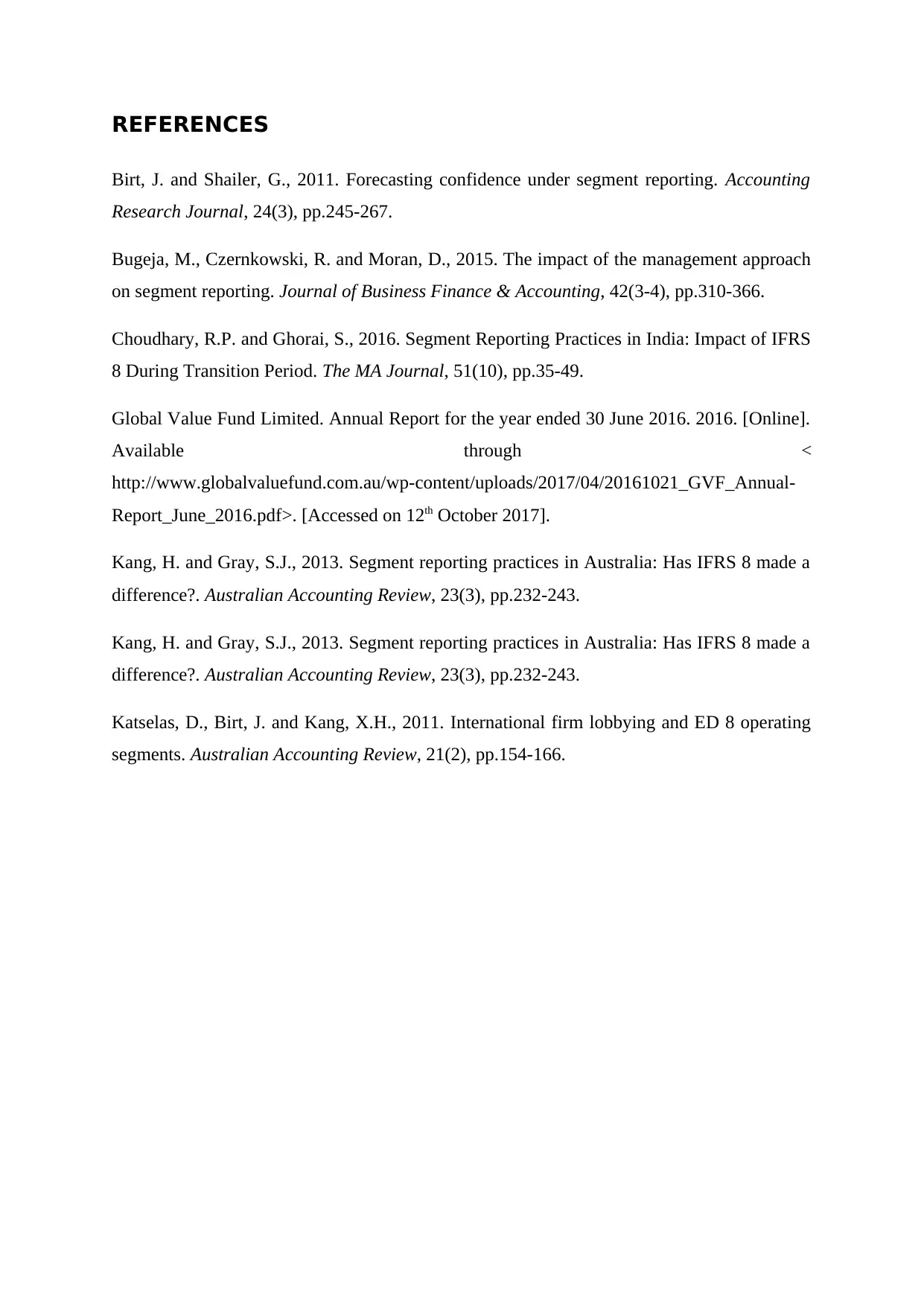
REFERENCES
Birt, J. and Shailer, G., 2011. Forecasting confidence under segment reporting. Accounting
Research Journal, 24(3), pp.245-267.
Bugeja, M., Czernkowski, R. and Moran, D., 2015. The impact of the management approach
on segment reporting. Journal of Business Finance & Accounting, 42(3-4), pp.310-366.
Choudhary, R.P. and Ghorai, S., 2016. Segment Reporting Practices in India: Impact of IFRS
8 During Transition Period. The MA Journal, 51(10), pp.35-49.
Global Value Fund Limited. Annual Report for the year ended 30 June 2016. 2016. [Online].
Available through <
http://www.globalvaluefund.com.au/wp-content/uploads/2017/04/20161021_GVF_Annual-
Report_June_2016.pdf>. [Accessed on 12th October 2017].
Kang, H. and Gray, S.J., 2013. Segment reporting practices in Australia: Has IFRS 8 made a
difference?. Australian Accounting Review, 23(3), pp.232-243.
Kang, H. and Gray, S.J., 2013. Segment reporting practices in Australia: Has IFRS 8 made a
difference?. Australian Accounting Review, 23(3), pp.232-243.
Katselas, D., Birt, J. and Kang, X.H., 2011. International firm lobbying and ED 8 operating
segments. Australian Accounting Review, 21(2), pp.154-166.
Birt, J. and Shailer, G., 2011. Forecasting confidence under segment reporting. Accounting
Research Journal, 24(3), pp.245-267.
Bugeja, M., Czernkowski, R. and Moran, D., 2015. The impact of the management approach
on segment reporting. Journal of Business Finance & Accounting, 42(3-4), pp.310-366.
Choudhary, R.P. and Ghorai, S., 2016. Segment Reporting Practices in India: Impact of IFRS
8 During Transition Period. The MA Journal, 51(10), pp.35-49.
Global Value Fund Limited. Annual Report for the year ended 30 June 2016. 2016. [Online].
Available through <
http://www.globalvaluefund.com.au/wp-content/uploads/2017/04/20161021_GVF_Annual-
Report_June_2016.pdf>. [Accessed on 12th October 2017].
Kang, H. and Gray, S.J., 2013. Segment reporting practices in Australia: Has IFRS 8 made a
difference?. Australian Accounting Review, 23(3), pp.232-243.
Kang, H. and Gray, S.J., 2013. Segment reporting practices in Australia: Has IFRS 8 made a
difference?. Australian Accounting Review, 23(3), pp.232-243.
Katselas, D., Birt, J. and Kang, X.H., 2011. International firm lobbying and ED 8 operating
segments. Australian Accounting Review, 21(2), pp.154-166.
⊘ This is a preview!⊘
Do you want full access?
Subscribe today to unlock all pages.

Trusted by 1+ million students worldwide
1 out of 6
Related Documents
Your All-in-One AI-Powered Toolkit for Academic Success.
+13062052269
info@desklib.com
Available 24*7 on WhatsApp / Email
![[object Object]](/_next/static/media/star-bottom.7253800d.svg)
Unlock your academic potential
Copyright © 2020–2025 A2Z Services. All Rights Reserved. Developed and managed by ZUCOL.





